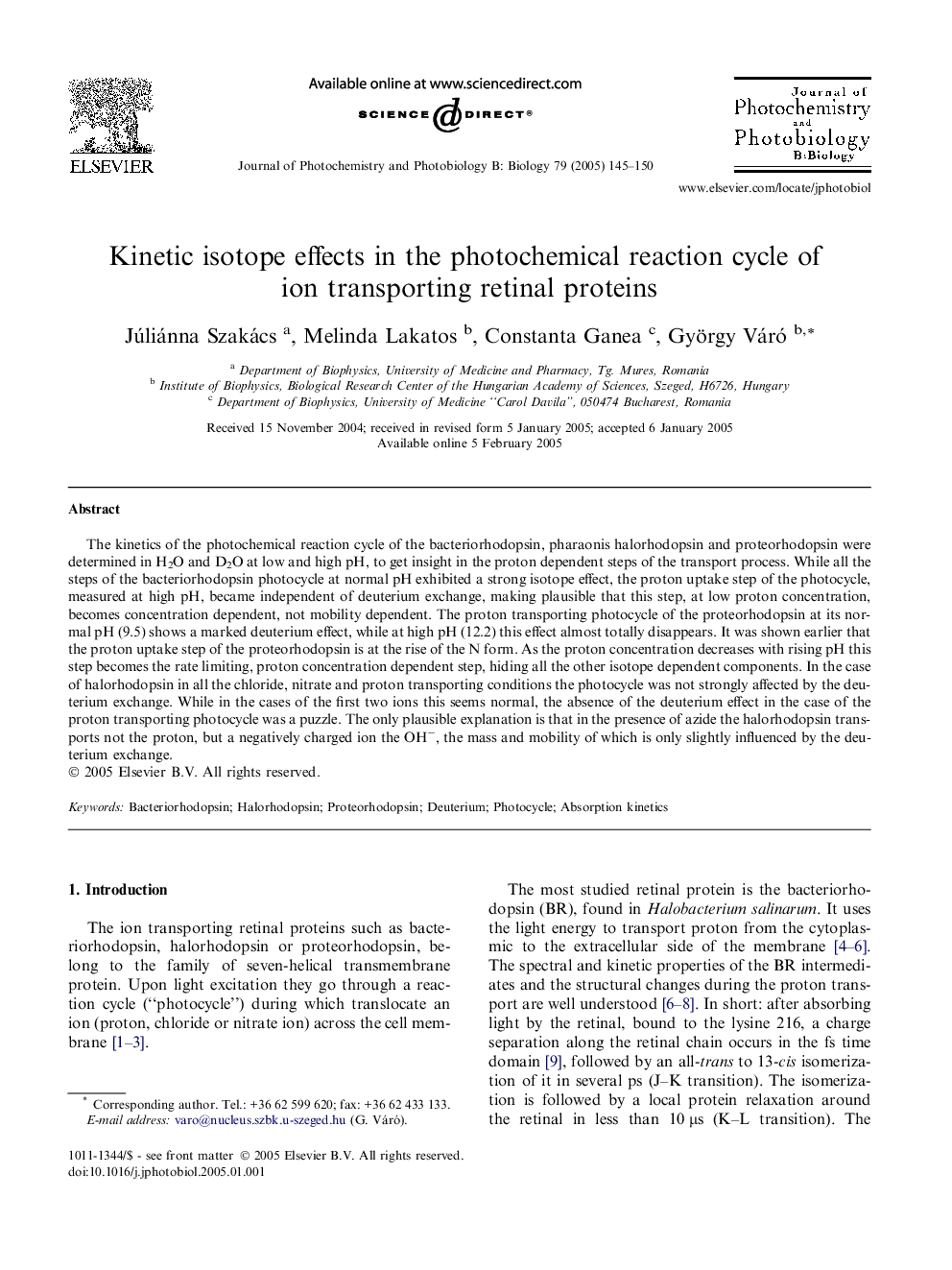| Article ID | Journal | Published Year | Pages | File Type |
|---|---|---|---|---|
| 9607062 | Journal of Photochemistry and Photobiology B: Biology | 2005 | 6 Pages |
Abstract
The kinetics of the photochemical reaction cycle of the bacteriorhodopsin, pharaonis halorhodopsin and proteorhodopsin were determined in H2O and D2O at low and high pH, to get insight in the proton dependent steps of the transport process. While all the steps of the bacteriorhodopsin photocycle at normal pH exhibited a strong isotope effect, the proton uptake step of the photocycle, measured at high pH, became independent of deuterium exchange, making plausible that this step, at low proton concentration, becomes concentration dependent, not mobility dependent. The proton transporting photocycle of the proteorhodopsin at its normal pH (9.5) shows a marked deuterium effect, while at high pH (12.2) this effect almost totally disappears. It was shown earlier that the proton uptake step of the proteorhodopsin is at the rise of the N form. As the proton concentration decreases with rising pH this step becomes the rate limiting, proton concentration dependent step, hiding all the other isotope dependent components. In the case of halorhodopsin in all the chloride, nitrate and proton transporting conditions the photocycle was not strongly affected by the deuterium exchange. While in the cases of the first two ions this seems normal, the absence of the deuterium effect in the case of the proton transporting photocycle was a puzzle. The only plausible explanation is that in the presence of azide the halorhodopsin transports not the proton, but a negatively charged ion the OHâ, the mass and mobility of which is only slightly influenced by the deuterium exchange.
Related Topics
Physical Sciences and Engineering
Chemical Engineering
Bioengineering
Authors
Júliánna Szakács, Melinda Lakatos, Constanta Ganea, György Váró,
